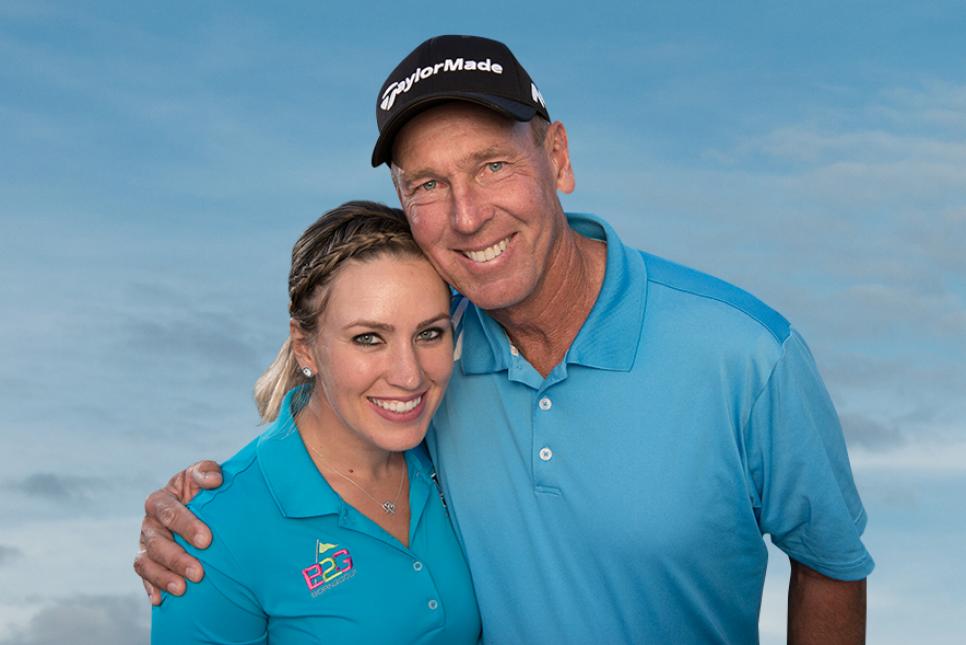Driving
Why You Slice
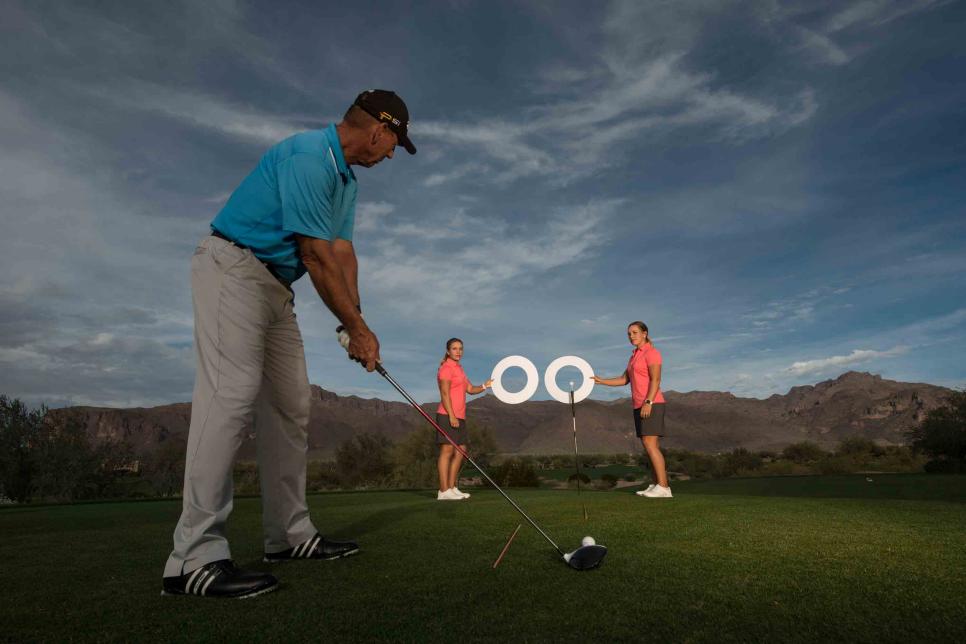
Photo by Dom Furore
I grew up on the lesson tee. Sometimes taking lessons, but mostly watching my dad [teacher Mike Malaska] give them or listening to legends like Jim Flick and Bob Toski. Now I'm teaching, too, and I can say that one thing hasn't changed: Golfers hit slices. And the more they use their instincts to try to stop those slices, the farther right the ball goes, which we'll get to in a minute.
That's my dad playing the slicer (above), and me holding the rings. We're showing the difference between the target and what a slicer sees as the target (more on that below). This demonstration sums up how we feel about teaching: Once you understand the root cause of a problem—a misconception, a faulty feel, an illusion—it's easy to fix. Now let's go to the lesson tee. —With Peter Morrice
FAULT: YOUR VIEW OF THE TARGET MAKES IT LOOK LEFT
FIX: SQUARE UP TO SOMETHING A LOT CLOSER
Here's an exercise we do that shocks many golfers. Stand behind the ball and sight the middle of the fairway through an object, like the ring I'm holding in my right hand. Then take your setup and have someone move the ring until you see the fairway through it again—that's the one in my left hand. Go back behind the ball, and see the difference. This visual challenge, called parallax, is caused by your eyes being to the side of the ball at address. Parallax makes slicers try to pull the ball to hit their target. But the more you swing left, the more likely the clubface will be open to that path at impact, which causes a slice.
The best way to counteract parallax is to use an intermediate target. From behind the ball, pick a spot three to five feet down your target line. When you set up, square the clubface to that spot first, then set your body perpendicular to the face. Trust your aim and try to make the ball start just right of the intermediate target. You'll be hitting from the inside with the clubface closing at impact for a draw. Yes, a draw.
FAULT: YOUR GRIP LEAVES THE CLUBFACE OPEN
FIX: FIND YOUR NATURAL HAND POSITION
For the grip, a lot of golfers have heard two things: (1) Point the thumbs down the shaft, and (2) The palms face each other. Unfortunately, these tips are slice producers. They put the left hand (for righties) in a weak position, rotated outward too much. Most people naturally have some inward rotation in their hands; if they stood facing you, you'd see some of the backs of their hands. When you take a weak grip with a square clubface at address—like most slicers do—the face will turn open when you swing down and your hand goes into its natural inward rotation. Slice City!
Here's how you find your ideal left-hand grip. Stand with your arms at your sides and tilt into your golf posture. Look at the position of your left hand (below. left). When you grip a club, try to match that position. For most people, that means seeing two or three knuckles when they look down at address (below, right). The right hand is simple: Cover the left thumb so the right palm is facing the target. Now your grip is good to go.
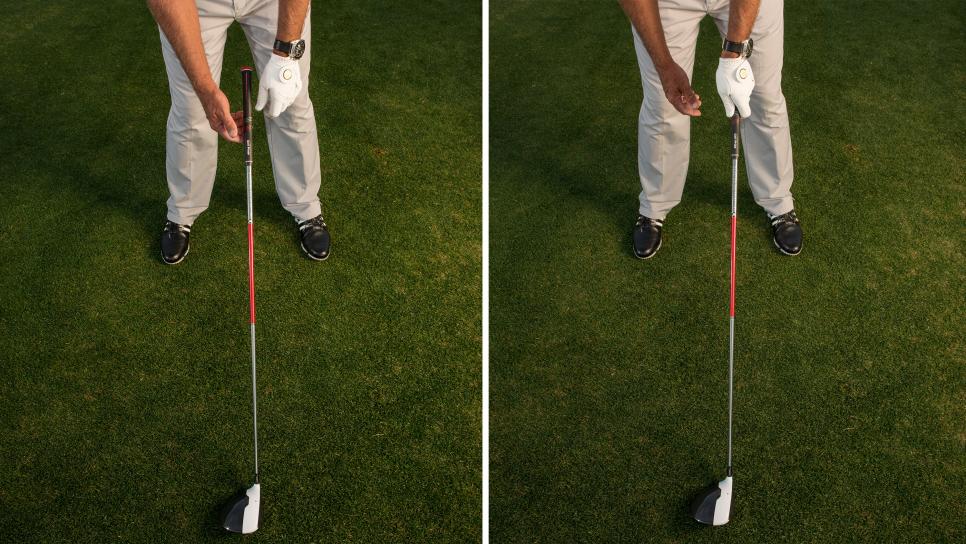
FAULT: YOUR INSTINCT IS TO SWING TO THE LEFT
FIX: LEARN WHAT AN INSIDE PATH FEELS LIKE
The golfer at top of the page—the one who sees the target to the left—tries to pull the ball and, therefore, comes over the top. That means the downswing is over the top of, or steeper than, the backswing. Problem is, this move inhibits arm rotation through impact. Think about it: If the club is coming down steep and you let your arms rotate, you'll miss the ball to the outside. The only way to hit it from a steep downswing is to pull your arms in and drag the grip to the left. That's why over-the-top swingers slice: The arms don't rotate, so the face stays open.
Try the split-grip drill to feel arm rotation (below). Set up with a 6-iron, then separate your hands six inches on the grip. Practice swinging back and through. You can hit balls, too. You'll naturally keep the club to the inside on the downswing, and your left arm will fold against your side as you go through. You'll feel the top of the grip slow down into impact as the right arm rotates over and rehinges the club into the follow-through. That's exactly what should happen in your normal swing.
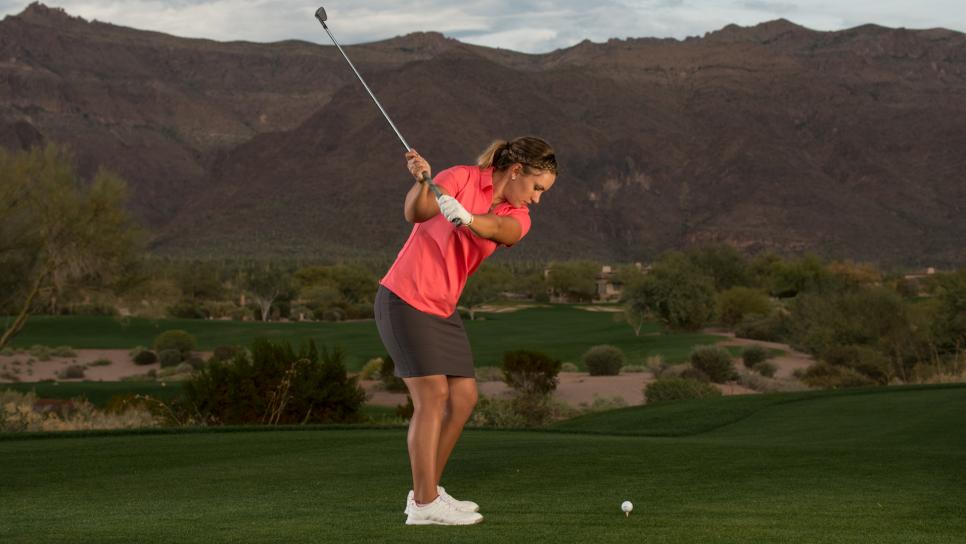
‘Let the momentum of the club pull you through.’
FAULT: YOUR SHOULDERS LEAD THE DOWNSWING
FIX: SWING YOUR ARMS PAST YOUR BODY
Another thing that gets the over-the-top slicer in trouble is the instinct to try to square the clubface by twisting the shoulders toward the target. If you remember one thing, let it be this: The hands, not the body, square the face. To calm your upper body, feel like your chest is pointing at the ball at impact and the clubhead is releasing past you. Jack Nicklaus used to say he felt like the buttons on his shirt were facing the ball when he hit it.
Look at this photo of me (below): Notice that my upper body looks pretty passive, with my arms and the club orbiting around me. The momentum of the clubhead is pulling my body through, not the other way around. A good drill for learning to swing past your body is to drop your back foot away from the target line so you're in an exaggerated closed stance. Practice from that position, and you'll learn to swing into the ball from the inside before the club exits to the left. Imagine you're hitting the inside-back quadrant of the ball. That's how you beat a slice.
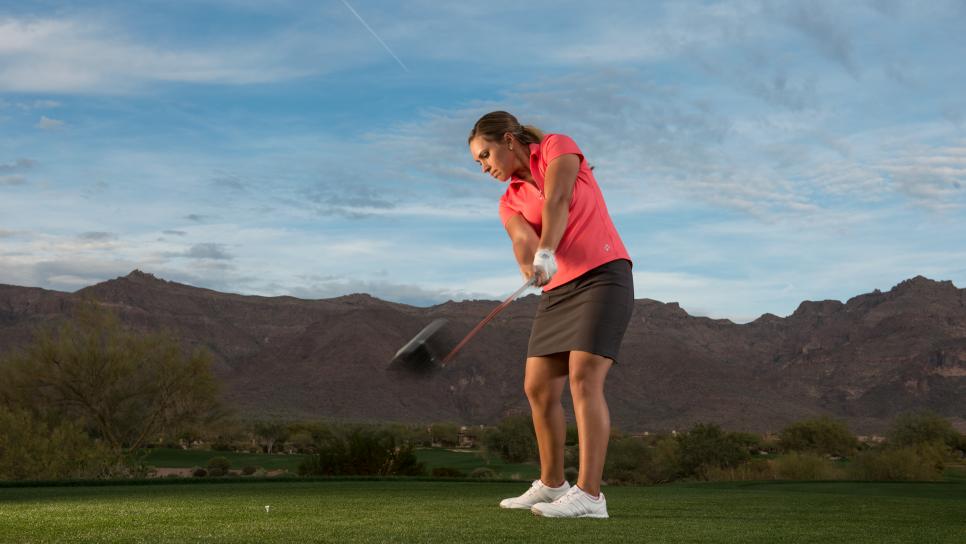
Ashley Moss founded Born2Golf and teaches at Mesa (Ariz.) C.C.
Mike Malaska is at Superstition Mountain (Ariz.) G. & C.C.
